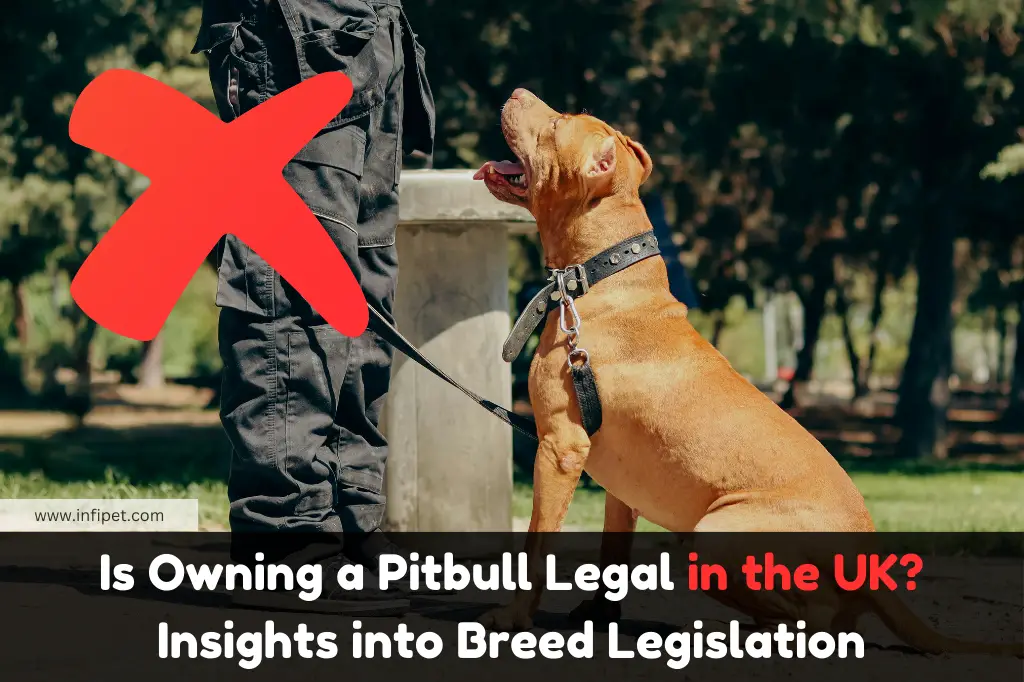In the UK, the topic of owning a pitbull is complex and laden with legal implications. Breed-specific legislation (BSL) has placed restrictions on pitbull ownership, reflecting a history of these dogs being associated with aggression due to their past use in dogfighting. This article delves into the legality of pitbulls in the UK, the rationale behind BSL, and the broader societal perceptions of this often-misunderstood breed. We’ll explore the legal status, the value, and the myths surrounding pitbulls, as well as provide insights into responsible ownership and the breed’s characteristics.
Key Takeaways
- Breed-specific legislation in the UK impacts pitbull ownership, with laws forbidding pitbulls in certain areas, reflecting concerns over dog aggression.
- The United Kennel Club recognizes pitbulls, but their legal status remains contentious due to their history with dogfighting; the American Kennel Club does not recognize them.
- Pitbull valuation is influenced by factors such as reputable breeding, bloodlines, pedigree, and physical traits, which also affect their worth.
- Pitbulls have transformed from fighting dogs to family pets, shedding light on their misunderstood temperament and behavior through responsible ownership.
- Comparisons between pitbulls and American Bulldogs highlight differences in physical characteristics, temperament, and ownership costs, with misconceptions often affecting both breeds.
Understanding Breed-Specific Legislation in the UK
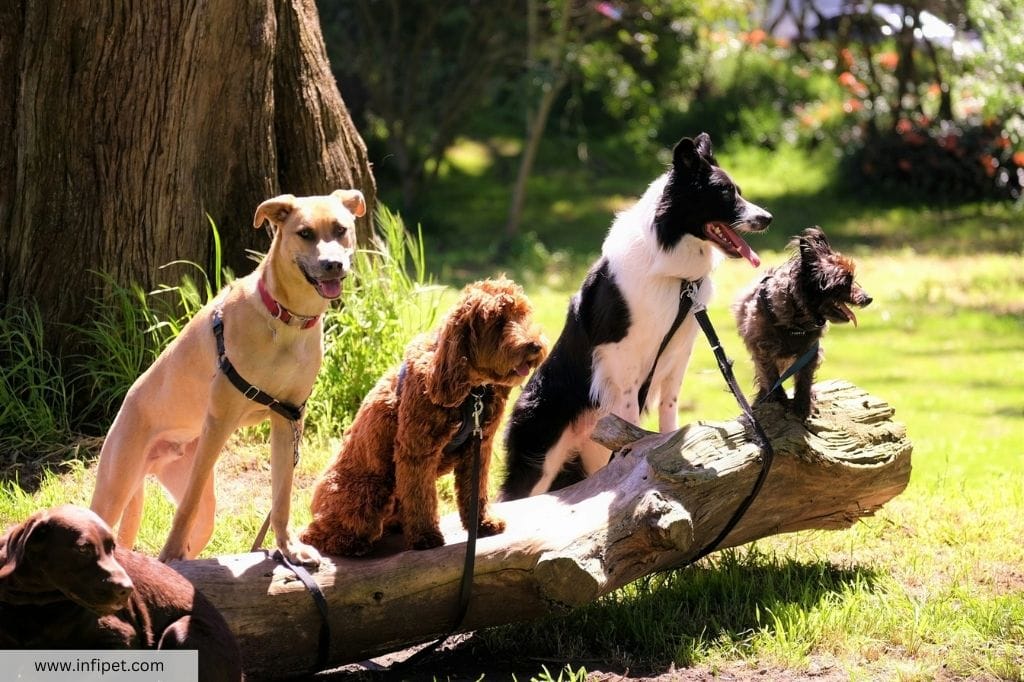
The Basics of Breed-Specific Legislation
Breed-Specific Legislation (BSL) in the UK is a legal framework that targets specific dog breeds in an effort to reduce the risk of harm to people and other animals. BSL can lead to restrictions or outright bans on owning certain breeds, including the Pitbull Terrier, which is often at the center of this controversial debate.
In the context of BSL, it’s crucial to understand that not all dog breeds are treated equally under the law. For instance, while Pitbulls may face stringent regulations, other breeds like Bulldogs might not be subject to the same level of scrutiny. This disparity in treatment raises important questions about the effectiveness and fairness of BSL.
The intention behind BSL is to ensure public safety by curbing the potential dangers posed by dogs deemed to be aggressive or dangerous. However, critics argue that BSL is too broad and fails to consider individual dog behavior, instead relying on breed as a sole indicator of risk.
When considering the ownership of a dog breed affected by BSL, it’s essential to be aware of the local regulations that may impact your ability to keep your pet. The UK has over 20 pieces of legislation related to dog ownership, which cover a wide range of issues from dogs in cars to dog breeding laws.
How BSL Affects Pitbull Ownership
Breed-Specific Legislation (BSL) has a profound impact on the ownership of Pitbulls in the UK. Under the Dangerous Dogs Act 1991, certain breeds, including the Pitbull Terrier, are classified as ‘prohibited dogs’. This classification means that owning, breeding, selling, or giving away Pitbulls is illegal without specific exemption from a court.
The High Court’s interpretation of the act requires a dog to exhibit a significant number of physical characteristics of a Pitbull Terrier to be considered of the type.
Owners who wish to keep their Pitbulls legally must adhere to stringent conditions, such as registering the dog, obtaining third-party insurance, neutering, and ensuring the dog is muzzled and leashed in public. Failure to comply can lead to severe penalties, including the possibility of the dog being seized and euthanized. Here’s a quick overview of the consequences for non-compliance:
- Seizure of the dog
- Legal action against the owner
- Potential destruction of the dog if deemed a threat
Understanding these regulations is crucial for current or prospective Pitbull owners to ensure they are not inadvertently breaking the law.
Bulldogs and BSL: What You Need to Know
When discussing Breed-Specific Legislation (BSL) in the UK, it’s crucial to understand that not only Pitbulls are affected. Bulldogs, particularly the American Bulldog, also fall under scrutiny. While not banned, they are often mistaken for Pitbulls due to their physical similarities, which can lead to complications for owners.
The American Bulldog is subject to certain restrictions, but it’s essential to differentiate between this breed and the American Pitbull Terrier. The American Bulldog is larger and has distinct breed characteristics. Here’s a quick comparison to clarify:
- American Bulldog: Typically larger, with a powerful build and a friendly demeanor.
- American Pitbull Terrier: Often more muscular, with a reputation for being energetic and strong-willed.
It’s important for current and prospective owners to be aware of the nuances between breeds to ensure compliance with BSL and to advocate for their pets effectively.
Recently, the government has implemented a ban on American XL Bully dogs in England and Wales, which came into force on 31 December 2023. This ban adds another layer to the already complex landscape of breed legislation, highlighting the need for owners to stay informed about the latest legal changes affecting their pets.
The Legal Status of Pitbulls in the UK
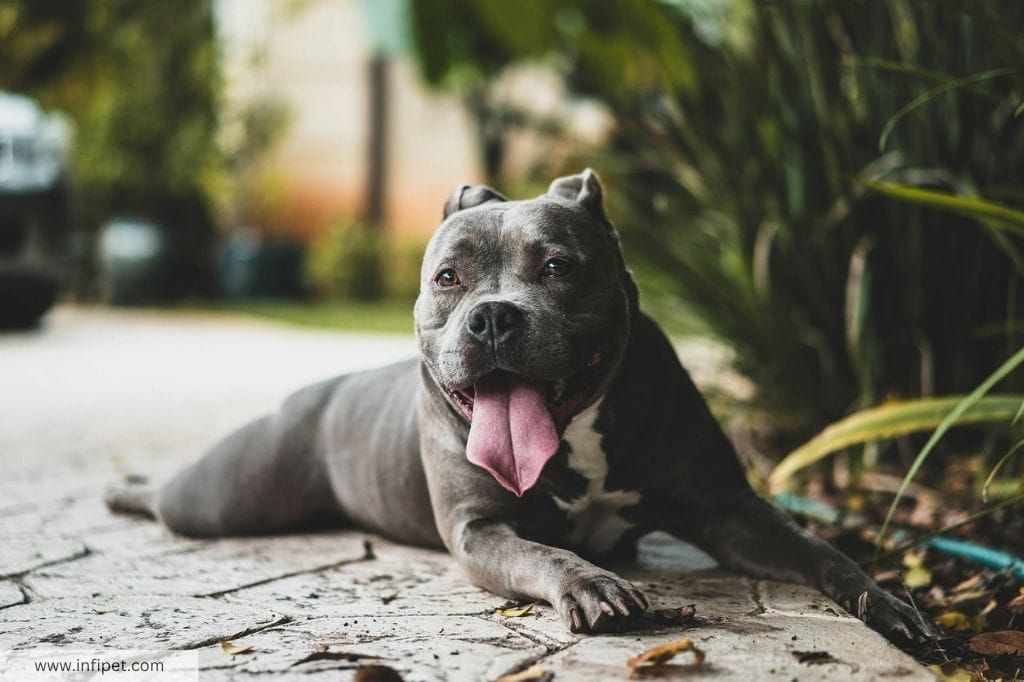
The History of Pitbull Legislation
The Dangerous Dogs Act 1991 was a pivotal moment in the history of Pitbull legislation in the UK. This act marked the beginning of breed-specific legislation (BSL), which targeted certain dog breeds deemed to be dangerous. Pitbulls, unfortunately, fell into this category, leading to restrictions and even outright bans in some cases.
The act’s introduction was a response to public concern over dog attacks, and it aimed to ensure public safety by controlling the ownership of specific breeds.
While the intentions behind the act were to increase safety, it has been met with criticism over the years. Many argue that it fails to consider the individual behavior of dogs, instead focusing on specific breeds. This has led to debates on the effectiveness of BSL and calls for a more nuanced approach to dog legislation.
- 1991: Introduction of the Dangerous Dogs Act
- Subsequent years: Amendments and updates to the act
- Present day: Ongoing discussions about the effectiveness of BSL
Current Laws and Restrictions
In the UK, the legal status of Pitbulls is tightly regulated under the Dangerous Dogs Act 1991. This act specifically lists Pitbull Terriers as a type of dog that is banned, unless an exemption is granted. Owners of Pitbulls must adhere to strict conditions, including registration, microchipping, and neutering. Additionally, when in public, these dogs must be muzzled and kept on a lead by someone over 16 years old.
The recent updates to legislation have introduced new rules for owning breeds like the American XL Bully, following a series of incidents. As of 31 December 2023, these changes reflect the government’s commitment to public safety and responsible dog ownership. It’s crucial for current and prospective owners to stay informed about these regulations to ensure compliance and avoid legal repercussions.
It is essential for dog owners to understand the implications of breed-specific legislation (BSL) and how it affects their ability to own certain breeds, such as Pitbulls and Bulldogs. Researching local laws and housing policies is a critical step before committing to any dog breed.
Consequences for Illegal Pitbull Ownership
Owning a Pitbull in the UK under the shadow of breed-specific legislation (BSL) can lead to severe legal repercussions. If found guilty of owning a banned breed, such as a Pitbull, without specific exemption, one may face harsh penalties. These include imprisonment, hefty fines, and the most heart-wrenching consequence of all: the mandatory destruction of the beloved pet.
The law is clear and unforgiving when it comes to prohibited breeds. It’s crucial for potential and current dog owners to understand the gravity of these laws to prevent tragic outcomes.
The table below outlines the potential consequences for illegal Pitbull ownership in the UK:
| Consequence | Details |
|---|---|
| Imprisonment | Up to six months |
| Fine | Unlimited |
| Dog’s Fate | Mandatory euthanasia |
It’s essential to stay informed about the current laws and restrictions to ensure the safety and legality of your pet ownership.
The Value of Pitbulls: Beyond the Price Tag
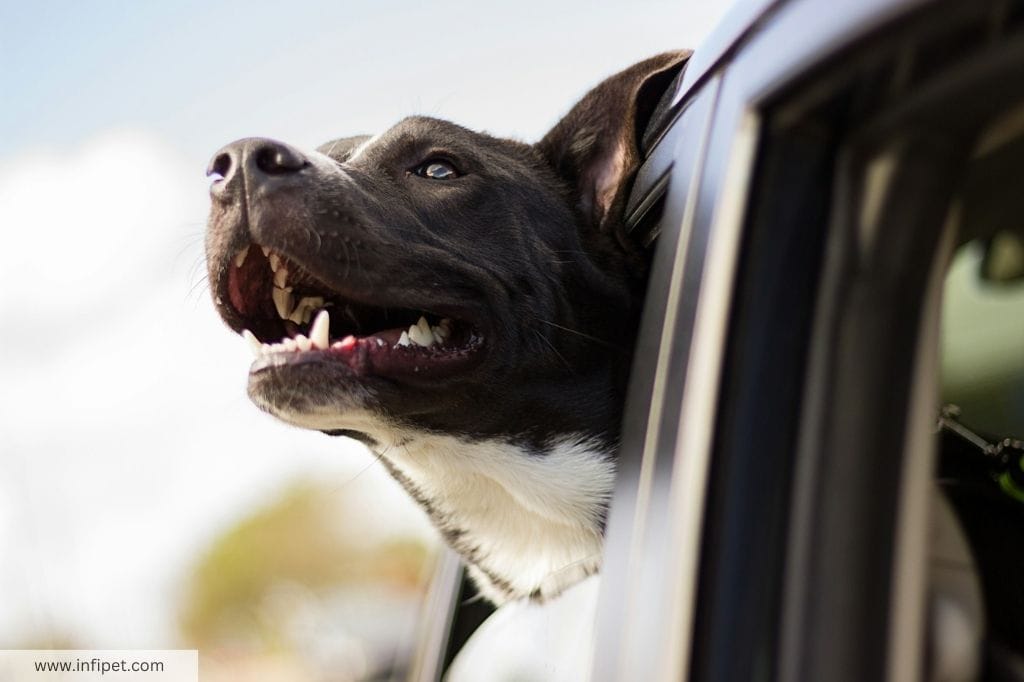
Factors Influencing Pitbull Valuation
When considering the purchase of an American Pitbull Terrier, it’s important to understand the various factors that can influence their valuation. The breeder’s reputation is a significant determinant, as well-known breeders with a history of producing quality dogs often command higher prices. The puppy’s lineage and pedigree also play a crucial role, with those boasting champion bloodlines or rare traits being more expensive.
The value of a Pitbull is not solely determined by its price tag; it encompasses the dog’s health, temperament, and potential as a family companion.
Market demand can cause fluctuations in price, especially for Pitbulls with unique colors or those from a celebrity lineage. Physical traits such as size, build, and coat color can also affect the cost. Here’s a quick overview of average prices based on these factors:
- Reputable breeders: $550 – $4000+
- Champion bloodlines: $2000 – $10,000+
- Unique traits (e.g., Hulk Pitbull): Up to $55,000
- Common varieties (e.g., Red Nose, Blue Nose): Up to $2000
Remember, while the initial cost is an important consideration, the ongoing expenses of responsible Pitbull ownership, such as health care, training, and nutrition, also contribute to the overall investment in your pet.
The Cost of Responsible Pitbull Ownership
Owning a Pitbull is a commitment that goes beyond the initial purchase price. The total cost of ownership includes not only the purchase price but also ongoing expenses such as food, healthcare, training, and supplies. For instance, the average price of a Pitbull puppy from a reputable breeder ranges from $550 to $2000, but prices can soar if the dog boasts a prestigious bloodline or comes from a highly sought-after breeder.
When considering the cost of responsible ownership, it’s important to factor in the essentials. High-quality dog food and treats are a must to maintain your Pitbull’s health and prevent obesity. Additionally, regular veterinary care, including vaccinations, spaying or neutering, and emergency health issues, should be budgeted for.
While the initial cost may be lower when adopting from a shelter, the value of giving a Pitbull a forever home is immeasurable.
Here’s a quick breakdown of some typical costs associated with Pitbull ownership:
- Purchase Price: $550 – $2000 (can be higher for premium bloodlines)
- Food and Treats: $50 – $100 per month
- Veterinary Care: $200 – $600 annually
- Training and Supplies: $100 – $500 initially
Remember, these are just estimates and actual costs can vary based on individual circumstances and the level of care you wish to provide.
Why Pedigree and Bloodlines Matter
When it comes to Pitbulls, understanding the significance of pedigree and bloodlines is crucial for several reasons. Each bloodline carries specific genetic traits that can influence a dog’s temperament, health, and suitability for various roles or activities. For potential owners, this knowledge can guide the selection of a Pitbull that aligns with their lifestyle and expectations.
The value of a well-documented pedigree is not just about prestige; it’s about predictability and health. A traceable lineage can provide insights into potential hereditary health issues, allowing for proactive care and informed breeding decisions.
Here are some red flags to avoid when selecting a Pitbull based on pedigree:
- Buying a dog from a pet store (most of their puppies come from puppy mills)
- Breeders who do not allow you to visit their puppies on site
- Places where you cannot meet at least one of the puppy’s parents
- Breeders who ship their puppies
- Puppies younger than 8 weeks old
- Breeders who do not ask you questions to ensure you are a good fit for one of their puppies
- Breeding facilities that offer more than one or two breeds of puppies
Understanding the history and traits of different Pitbull bloodlines can be a rewarding journey. It’s not just about the dog’s physical attributes; it’s about embracing the unique narrative that each bloodline represents.
Dispelling Myths: The Truth About Pitbulls
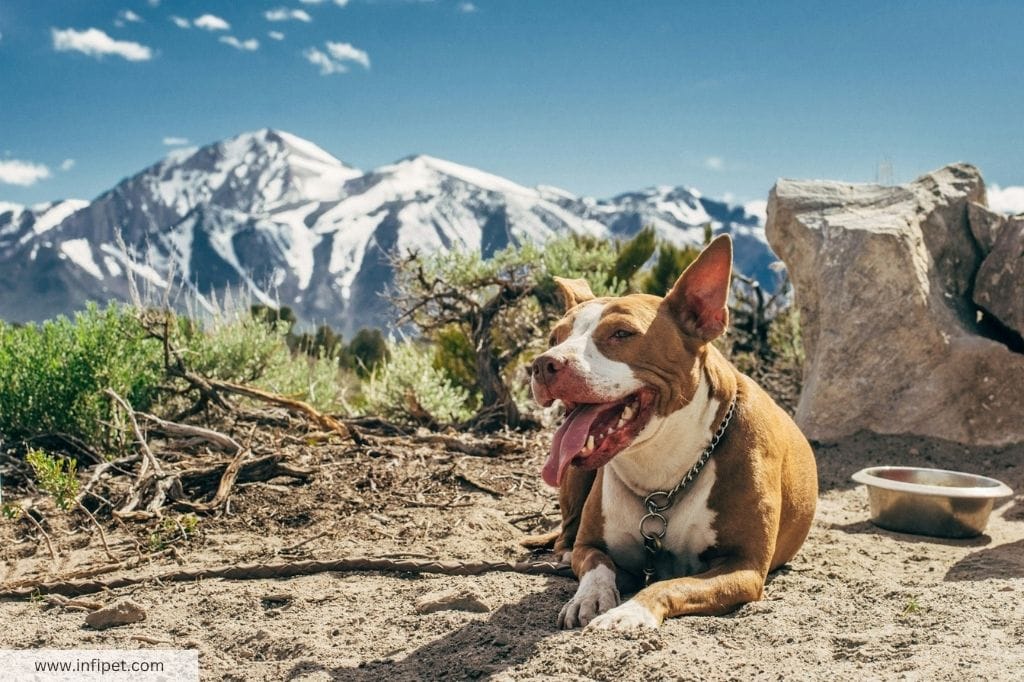
Combatting Stereotypes and Misconceptions
Pitbulls often fall victim to widespread stereotypes that paint them as inherently aggressive and dangerous. This misconception is fueled by sensationalized media reports and a misunderstanding of the breed’s nature. In reality, pitbulls are capable of being affectionate and loyal pets, with a temperament that is largely shaped by their upbringing and the care they receive from their owners.
The belief that pitbulls are the most dangerous dogs is not supported by scientific evidence. Instead, studies suggest that factors such as environment, socialization, and training play a crucial role in a dog’s behavior. It’s essential to recognize that any dog, regardless of breed, can display aggression if mistreated or poorly trained.
Pitbulls have a reputation as being aggressive and dangerous. Some people are actually attracted to that reputation. They buy pitbulls and then fail to take the necessary steps to ensure they are well-socialized and trained.
By focusing on responsible ownership and education, we can help to dismantle the myths surrounding pitbulls and showcase their true potential as loving companions. It’s time to shift the narrative and highlight the positive aspects of pitbulls that are often overlooked due to prejudice.
Understanding Pitbull Temperament and Behavior
Pitbulls are often misunderstood and stigmatized, but many animal experts and advocacy groups emphasize that pit bulls, like any other dog breed, have individual temperaments influenced by various factors. These dogs are known for their playful and fun-loving personality, making them excellent companions, especially for families with children.
Pitbulls were originally bred for activities like dog fighting, which has contributed to misconceptions about their nature. However, their temperament depends significantly on upbringing, training, and socialization, not an inherent predisposition to aggression.
Pitbulls also possess a natural protective instinct, often acting as watchdogs and providing protection when needed. Despite their reputation, they are very social and enjoy spending time with both humans and other animals. Their strength and muscular build make them suitable for various tasks, reflecting their working dog heritage.
Here are some common myths and realities about pitbulls:
- Myth #1: Pitbulls are naturally aggressive and dangerous.
- Reality: A pit bull’s temperament is shaped by its environment and care.
- Myth #2: Pitbulls have a “locking” jaw mechanism.
- Reality: There is no scientific evidence to support the existence of a “locking” jaw in pitbulls.
The Transformation from Fighters to Family Pets
The Pitbull’s journey from the fighting ring to the family living room is a testament to their adaptability and the deep bond they can form with humans. Their remarkable transition from fighter to farmhand and family pet underscores their versatility and inherent desire for companionship. Pitbulls have an impressive bite inhibition toward humans, a trait developed during their days as fighting dogs, ensuring the safety of their handlers.
Owners often recount the joy and love these dogs bring into their homes. They describe Pitbulls as sweet, caring, and full of energy, requiring daily walks and interaction. These dogs thrive on human connection and, when properly socialized, can be wonderful additions to the family. It’s important to note, however, that they may require careful introduction to other animals due to their history.
The Pitbull’s ability to transform from a breed associated with aggression to one that is loving and loyal is a clear indication of their true nature.
While the AKC has yet to fully recognize the breed, the United Kennel Club acknowledges the Pitbull’s place in the canine community. This acceptance is a step towards changing perceptions and recognizing the breed’s potential as devoted family members.
The American Pitbull Terrier: A Breed Overview
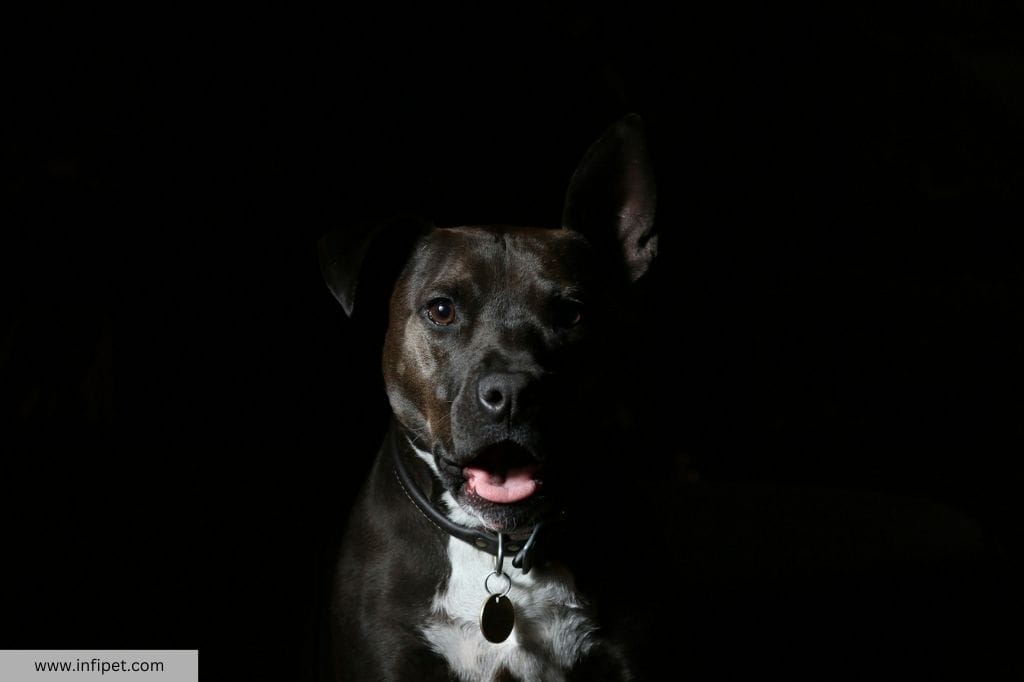
Historical Background and Origin
The American Pitbull Terrier (APBT), often simply referred to as a Pitbull, has a history that is both rich and, at times, misunderstood. Originally bred for bull-baiting, the breed’s purpose evolved significantly over time. After bull-baiting was outlawed in England in 1835, these dogs were repurposed for various roles, including ratting and farm work. Their versatility and temperament led them to become valued as family pets, affectionately known as ‘nanny dogs’ due to their gentle nature with children.
Despite their unfortunate association with dogfighting, Pitbulls were not always seen in this light. The breed’s journey from the pits to the living room highlights a transformation driven by human companionship and the breed’s adaptability. The APBT’s history in America diverges from that of the American Bulldog, with each breed developing unique characteristics and roles within society.
The APBT’s reputation as a ferocious breed stems from historical misuse in dogfighting rings. However, this does not reflect the breed’s true nature or potential as a loyal and loving companion.
Physical Characteristics and Breed Standards
The American Pitbull Terrier is a breed that combines strength, agility, and grace, making it easily recognizable. Their physical attributes reflect their historical role as working dogs, bred for tasks requiring significant power and determination. The breed standards for the American Pitbull Terrier emphasize a solid, muscular build, with a proportionate and symmetrical appearance that suggests great athleticism.
When it comes to size, American Pitbull Terriers are generally medium-sized dogs. Here’s a quick overview of their typical physical characteristics:
- Height: 17-21 Inches
- Weight: 30-65 Pounds
- Lifespan: 12-16 Years
Their coat is short and smooth, coming in a wide variety of colors. The only color not recognized in the breed standard is merle, as it is not considered a true Pitbull color. This diversity in coloration contributes to their unique and often striking appearance.
The breed’s temperament is just as important as its physical characteristics. American Pitbull Terriers are known for their affectionate, energetic, and loyal nature, which makes them excellent companions. It’s essential to understand that a well-tempered dog is the product of responsible ownership and proper socialization.
Recognition by Kennel Clubs and Registries
The American Pitbull Terrier (APBT) has a complex relationship with kennel clubs and registries. While the United Kennel Club (UKC) does recognize the APBT, the American Kennel Club (AKC) does not. This exclusion is primarily due to the breed’s historical association with dogfighting, which has influenced perceptions and policies.
Recognition by major kennel clubs can impact everything from a breed’s popularity to its eligibility for dog shows. For the APBT, this has resulted in a split where some organizations embrace the breed, while others maintain their distance. Here’s a quick overview of the APBT’s status with different registries:
- United Kennel Club: Recognized
- American Kennel Club: Not recognized
- American Staffordshire Terrier (considered by some as a variation of the APBT): Recognized by the AKC
Despite the lack of AKC recognition, the APBT enjoys a loyal following and continues to be a popular choice for many dog owners. The breed’s enthusiasts often participate in events and competitions hosted by organizations that acknowledge the APBT’s unique qualities and heritage.
Comparing Pitbulls and American Bulldogs
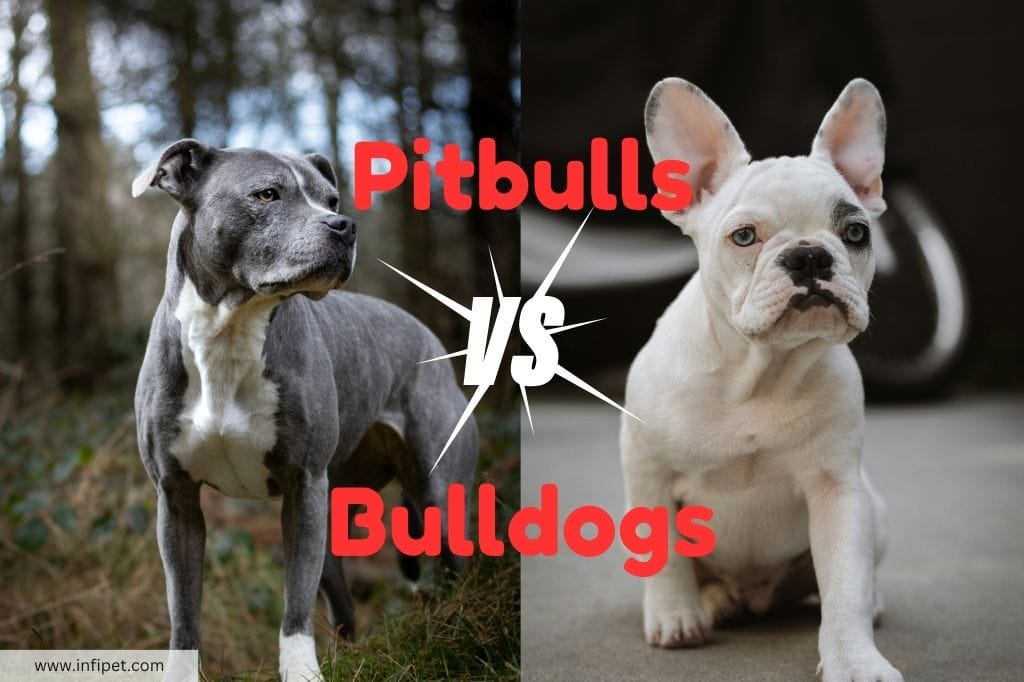
Physical Differences and Breed Traits
When comparing the American Bulldog and the American Pitbull Terrier, it’s essential to recognize their distinct physical attributes and breed traits. American Bulldogs are generally larger, with a height range of 22-27 inches and a weight that can tip the scales between 60-120 pounds. In contrast, American Pitbull Terriers are more compact, standing 17-21 inches tall and weighing 30-65 pounds.
The breeds also differ in their energy levels and temperament. American Bulldogs are known for being affectionate, loyal, and relatively quiet, with an average energy level. Pitbulls, on the other hand, are also affectionate and loyal but are notably more energetic. This high energy can be a delight for active owners but may require more attention and exercise to manage.
Both breeds share a commonality in their muscular body and strong jaw, reflecting their powerful heritage. However, their coat colors and patterns can vary significantly. American Bulldogs often sport a predominantly white coat with patches of other colors, while Pitbulls boast a wider color spectrum, excluding merle.
Understanding these differences is crucial for potential owners to ensure a good match with their lifestyle and preferences.
Temperament and Behavior: A Side-by-Side Look
When comparing the American Bulldog and the Pitbull, it’s clear that both breeds share a reputation for being affectionate and loyal companions. They are known for their love of people and do not thrive when isolated for extended periods. Historically referred to as ‘Nanny Dogs,’ these breeds are often trusted around children, though supervision is always recommended.
The primary difference in temperament lies in their interaction with other animals. Pitbulls, with a history linked to dogfighting, may exhibit more aggression towards other pets. American Bulldogs, while not inherently aggressive, can also show dominance but are generally more amenable to socialization from a young age.
Both breeds require dedicated training and socialization to mitigate any potential issues with other animals and to reinforce their naturally loving nature towards humans.
In terms of physicality and energy levels, the American Bulldog tends to be larger and quieter, while the Pitbull is smaller but more energetic. Understanding these nuances is crucial for prospective owners to ensure a harmonious household and a fulfilling relationship with their pet.
Ownership Costs: Pitbulls vs. American Bulldogs
When considering the addition of a furry friend to your family, it’s important to understand the financial commitment involved. The price of a Pitbull puppy is usually lower than the American Bulldog, with Pitbulls starting at around $800 and American Bulldogs ranging from $1,500 to $3,000. However, the initial cost is just the beginning.
Beyond the purchase price, prospective owners should consider the long-term costs associated with each breed. Pitbulls, known for their high energy levels, may require more investment in training and exercise to maintain their well-being. American Bulldogs, on the other hand, have a quieter temperament but may incur higher costs due to their larger size, which can impact food consumption and healthcare expenses.
Here’s a quick comparison of the two breeds:
| Breed | Initial Cost | Size | Temperament | Energy | Health | Lifespan |
|---|---|---|---|---|---|---|
| American Bulldog | $1,500-3,000 | 60-120 Pounds | Affectionate, Loyal, Quiet | Average | Average | 10-12 Years |
| American Pitbull Terrier | $800 and Up | 30-65 Pounds | Affectionate, Energetic, Loyal | High | Above Average | 12-16 Years |
While the initial cost is an important factor, the true value of a pet comes from the joy and companionship they bring into our lives.
Whether you lean towards a Pitbull or an American Bulldog, both breeds offer unique qualities that can enrich your home. It’s essential to factor in not only the financial aspect but also the compatibility of the breed with your lifestyle.
Responsible Ownership and Pitbull Advocacy
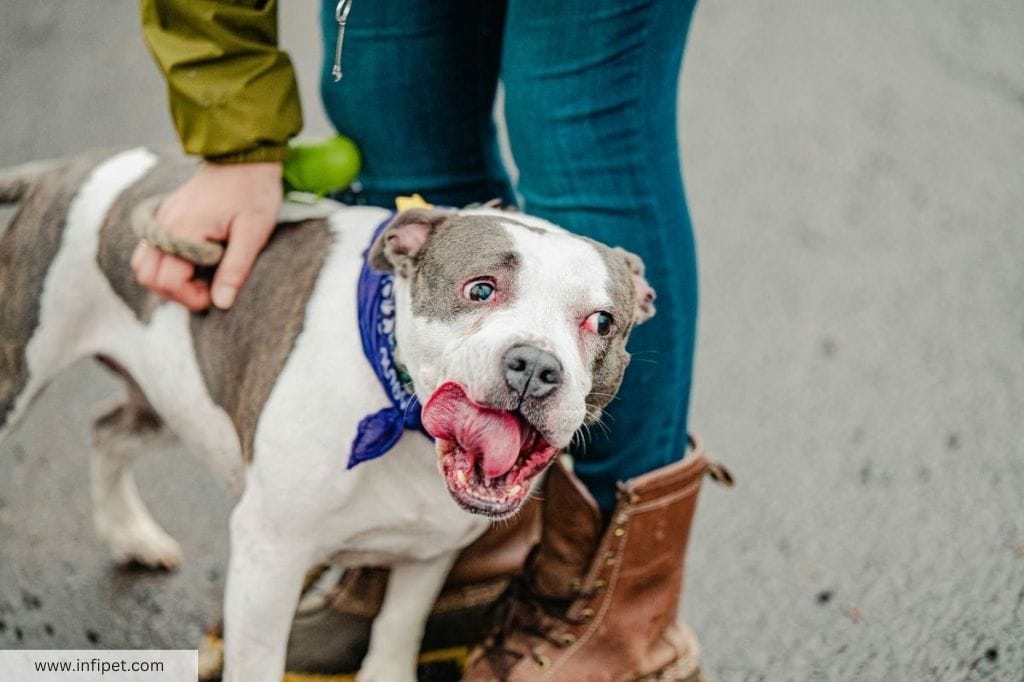
Promoting Positive Pitbull Images
The image of pit bulls is often overshadowed by misconceptions and a troubled history. However, these dogs possess a range of endearing qualities that make them excellent companions. For instance, pit bulls are known for their playful and fun-loving personality, especially around children, debunking the myth that they are inherently aggressive.
To change public perception, it’s crucial to highlight the positive aspects of pit bulls. Here are a few steps that can help:
- Educate others about the breed’s true temperament and capabilities.
- Share success stories of pit bulls that serve as therapy or rescue dogs.
- Encourage responsible ownership and showcase well-trained pit bulls in the community.
By focusing on education and positive reinforcement, we can reshape the narrative around pit bulls and reveal their true nature as loyal and affectionate pets.
The Role of Owners in Shaping Public Perception
Pitbull owners play a crucial role in shaping the public perception of the breed. By demonstrating responsible ownership, they can help dispel myths and highlight the true nature of pitbulls. It’s not just about providing love and care; it’s about being an ambassador for the breed, showcasing their positive attributes and countering the negative stereotypes that are often perpetuated by media reports.
- Educate others about the reality of pitbull behavior versus the myths.
- Share positive stories and experiences involving pitbulls.
- Participate in community events to increase visibility of well-behaved pitbulls.
- Support organizations that promote pitbull advocacy and responsible ownership.
The portrayal of pitbulls as dangerous in media reports has been a subject of controversy and debate. There is evidence to suggest that they are often unfairly targeted due to misconceptions and a lack of understanding about the breed.
Supporting Legislation that Protects Pitbulls
Advocating for fair and informed legislation is crucial for the protection and fair treatment of Pitbulls. Understanding the nuances of breed-specific legislation (BSL) is the first step in supporting laws that recognize the individual merits of dogs, rather than penalizing them based on breed alone. The Dangerous Dogs Act 1991 is a key piece of legislation that has had a significant impact on Pitbull ownership, as it prohibits the possession of dogs bred for fighting and imposes restrictions on certain breeds.
It’s essential to engage with policymakers and communities to promote laws that focus on responsible ownership and individual dog behavior. This approach helps to ensure that Pitbulls are judged fairly and given the opportunity to be valued members of society.
By staying informed and active in legislative discussions, Pitbull advocates can help shape a more equitable environment for all dog breeds. Collaboration with animal welfare organizations and legal experts can amplify the push for positive change, making a difference in the lives of Pitbulls and their owners.
Adopting a Pitbull: What Potential Owners Should Know
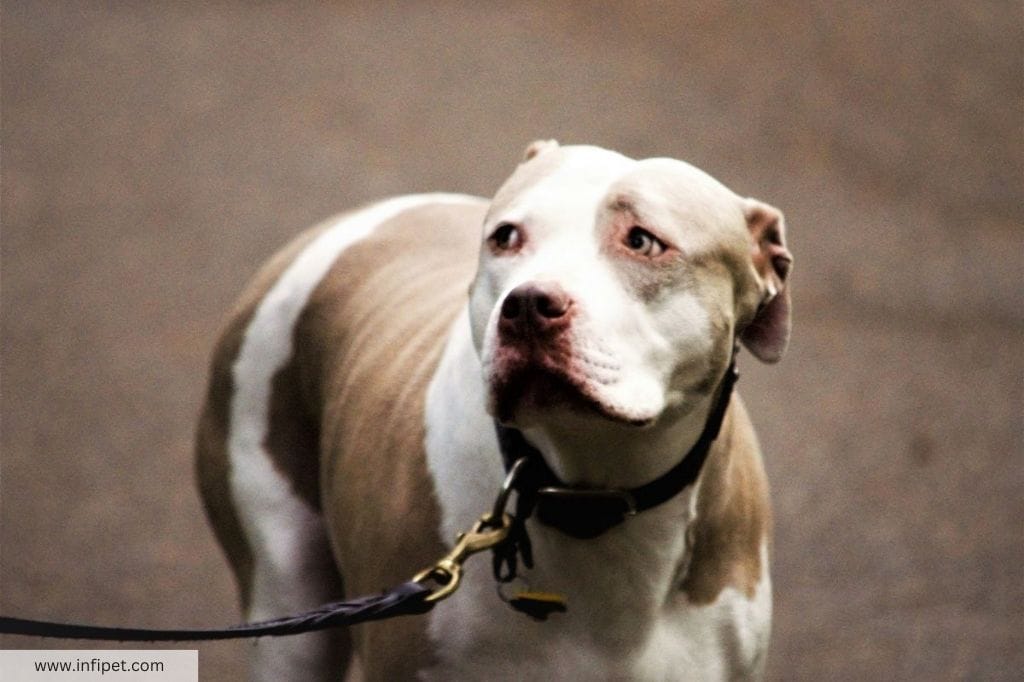
Assessing Your Readiness for a Pitbull
Adopting a pitbull is a significant commitment that requires careful consideration of your lifestyle and readiness to meet the breed’s needs. Pitbulls are known for their protective nature, social disposition, and strength, which makes them both rewarding and challenging pets. Before deciding to bring a pitbull into your home, it’s essential to evaluate if you’re prepared for the responsibilities that come with ownership.
- Energy and Time: Pitbulls require regular exercise and mental stimulation. Are you able to dedicate time each day for walks, play, and training?
- Space: Do you have a secure, spacious area for your pitbull to play and explore safely?
- Experience: While pitbulls can be great pets, they may not be the best choice for first-time dog owners due to their strong personalities and need for consistent training.
- Legal and Insurance Considerations: It’s crucial to check local laws and consult with your insurance agent, as some policies may not cover certain breeds.
Vet appointments are a necessary part of dog ownership. Ensure you’re ready to commit to regular check-ups and care for your pitbull’s health.
Understanding the unique traits and requirements of pitbulls will help you make an informed decision. If you’re ready to provide a loving, structured environment, a pitbull can be a wonderful addition to your family.
Navigating Adoption and Rescue Channels
Adopting a Pitbull is a rewarding journey that begins with understanding the various channels available for rescue and adoption. Researching local shelters and rescue organizations is a crucial first step. These facilities often have experienced staff who can help match you with a Pitbull that suits your lifestyle and experience level.
When considering adoption, it’s important to be aware of the signs of a reputable source. Avoid places that don’t allow you to visit the puppies on-site or meet at least one of the puppy’s parents. A trustworthy breeder or rescue will be as interested in your suitability as an owner as you are in the dog’s suitability as a pet.
While the process may seem daunting, the joy of giving a Pitbull a forever home makes every step worthwhile.
Here are some red flags to watch out for when adopting a Pitbull:
- Buying a dog from a pet store, as many source from puppy mills
- Breeders who ship their puppies
- Puppies offered younger than 8 weeks old
- Facilities offering multiple breeds indiscriminately
Remember to check out resources like ‘The Dog House‘ on Channel 4, which offers a unique perspective on matching people and dogs, potentially leading to a loving connection.
Preparing Your Home for a Pitbull
Welcoming a pitbull into your home requires thoughtful preparation to ensure a safe and comfortable environment for your new companion. Start by setting up a designated area for your pitbull with a sturdy crate, which serves as a secure retreat and aids in house training. Crates and gates are crucial for managing your dog’s space, especially when you can’t provide constant supervision.
To maintain a healthy routine, establish a feeding station with clean, pitbull-exclusive food and water bowls. Good strong fences around your yard will not only keep your pitbull safely contained but also provide peace of mind. For a touch of fun, consider adding a sandpit in a small space of your yard, where you can hide treats for your pitbull to discover.
Ensuring your home is pitbull-proof involves more than just physical adjustments. It’s about creating a nurturing environment that caters to their social and protective nature, while also accommodating their strength and energy.
Remember to stock up on grooming essentials and keep a schedule for regular vet appointments to maintain your pitbull’s health and well-being. With love and proper care, your pitbull will thrive and become a cherished member of your family.
Conclusion
In wrapping up our exploration of Pitbulls and their legal status in the UK, it’s clear that the breed’s reputation is marred by historical misconceptions and breed-specific legislation. Despite their past association with dogfighting, Pitbulls have evolved into affectionate family companions, known for their loyalty and friendly disposition towards their owners. However, the legality of owning a Pitbull in the UK is complex and requires potential owners to thoroughly research local laws and housing regulations. It’s crucial to understand the implications of breed-specific legislation before making the commitment to bring a Pitbull into your home. Remember, the worth of these dogs extends far beyond their price tag; it’s their companionship and the joy they bring to our lives that truly matter. So, if you’re considering a Pitbull as your next furry friend, arm yourself with knowledge and embrace the journey with an open heart.
Frequently Asked Questions
Is owning a Pitbull legal in the UK?
In the UK, owning a Pitbull is subject to strict regulations due to breed-specific legislation (BSL). Pitbulls are considered a banned breed, and ownership is only allowed under specific conditions, including registration, microchipping, neutering, and obtaining third-party liability insurance.
What is breed-specific legislation (BSL)?
Breed-specific legislation is a law that prohibits or restricts the ownership of certain dog breeds considered to be dangerous. In the UK, the Dangerous Dogs Act 1991 is an example of BSL which includes restrictions on breeds like the Pitbull Terrier.
What are the consequences of illegal Pitbull ownership in the UK?
Illegal ownership of a Pitbull in the UK can result in legal action, including fines, criminal charges, and the possibility of the dog being seized and euthanized.
Does the United Kennel Club (UKC) recognize Pitbulls?
The United Kennel Club does recognize the American Pitbull Terrier as a legitimate breed. However, the American Kennel Club (AKC) does not, which affects the breed’s status in certain regions.
Are Pitbulls considered dangerous dogs?
Pitbulls are not inherently dangerous; however, they have been historically bred for fighting, which has contributed to a negative stigma. Proper training, socialization, and responsible ownership are crucial in ensuring that Pitbulls are safe and affectionate pets.
How much is a Pitbull worth?
The worth of a Pitbull can vary greatly depending on factors such as the reputation of the breeder, bloodlines, pedigree, and physical traits. Costs can range from a few hundred to several thousand pounds.
What is the difference between Pitbulls and American Bulldogs?
Pitbulls and American Bulldogs have distinct physical differences and breed traits. American Bulldogs are generally more muscular with larger heads, while Pitbulls can come in a wider variety of colors and are typically less expensive.
Can Pitbulls be family pets?
Yes, Pitbulls can be excellent family pets. They are known for their loyalty and affection towards their owners. With proper training and socialization, they can be great companions.

